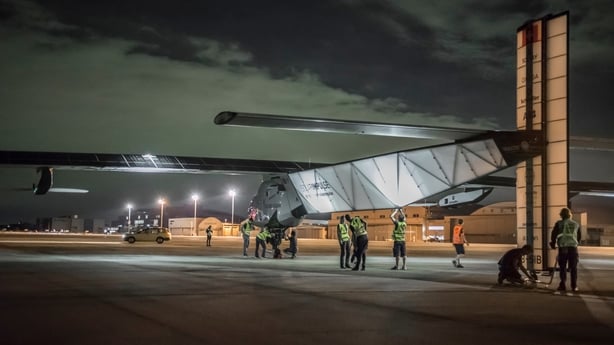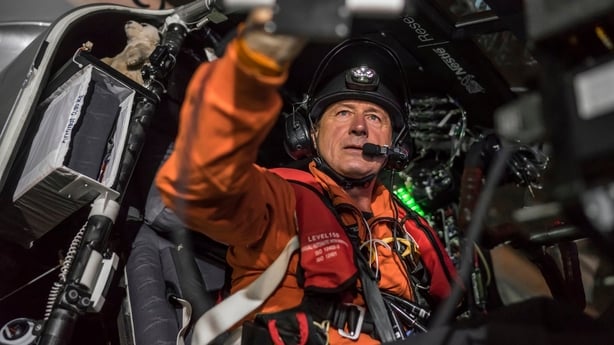A solar-powered plane has taken off from Japan to cross the Pacific Ocean on the seventh leg of its journey round the world.
The Solar Impulse 2 left Nanjing, China, on 31 May for Hawaii, but was forced to cut its journey short one day later due bad weather.
Swiss pilot Andre Borschberg, 62, said "a wall of clouds" formed over the Pacific ocean and he was forced to land the plane in the central Japanese city of Nagoya.
The aircraft’s departure has been postponed several times due to poor weather.
The trans-Pacific crossing is expected to be the toughest part of the trip. With nowhere to land after leaving Japan, it is considered the most risky leg.
"This is a one-way ticket to Hawaii. Andre Borschberg ... must now see this flight through to the end," said organisers.

 The plane took off from Abu Dhabi in March to begin the 35,000km global journey.
The plane took off from Abu Dhabi in March to begin the 35,000km global journey.
The entire trip was expected to span approximately 25 flight days broken up into 12 legs at speeds between 50 and 100km/h.
The journey to Hawaii is 7,900km and is expected to last at least five days and five nights.
The plane has 17,000 solar cells and on-board rechargeable batteries. Its top speed is 140km/h.
The aircraft is only as heavy as a family car but has a wingspan as wide as the largest passenger airliner.
Its design and construction took 12 years and a first version of the aircraft rolled out in 2009 broke records for heights and distances travelled by a manned solar plane.
The Solar Impulse 2 looks set to be the first aircraft to circumnavigate the globe powered only by the sun.

